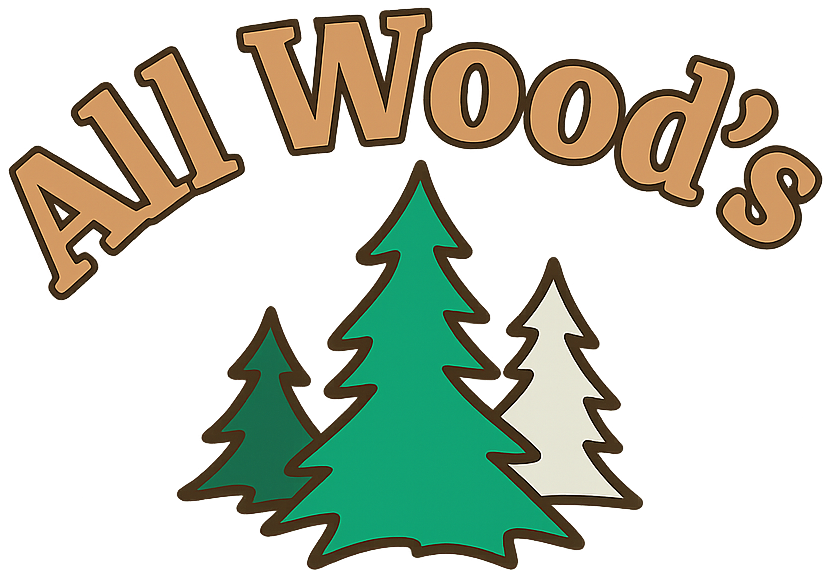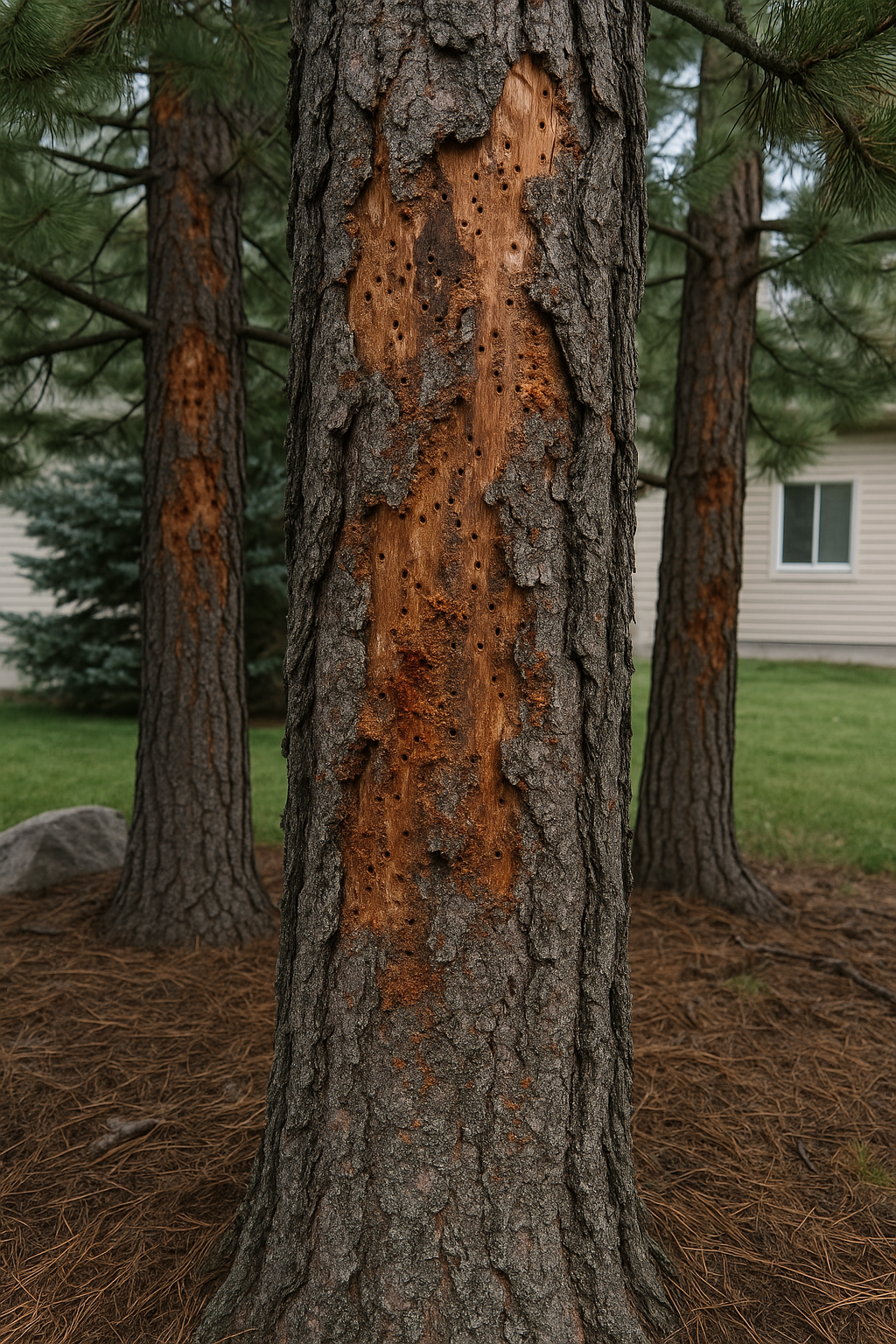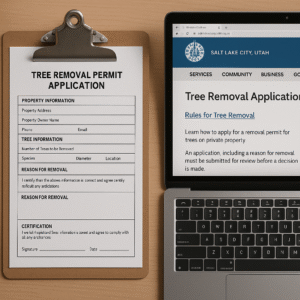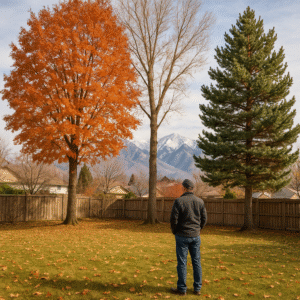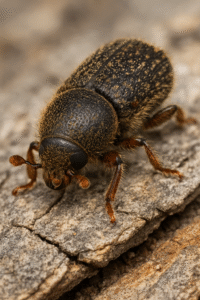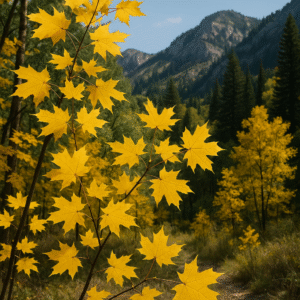Pine trees are a familiar and valued part of Northern Utah’s landscapes. They provide shade, privacy, and beauty to neighborhoods and mountain properties alike. Unfortunately, one of the biggest threats to these trees is a tiny but destructive insect: the pine beetle. Homeowners across the West, including here in Utah, are seeing the effects of pine beetle damage as warmer winters and drought conditions allow infestations to spread more easily.
The good news is that spotting the signs early and taking action can help save your trees and protect your property value.
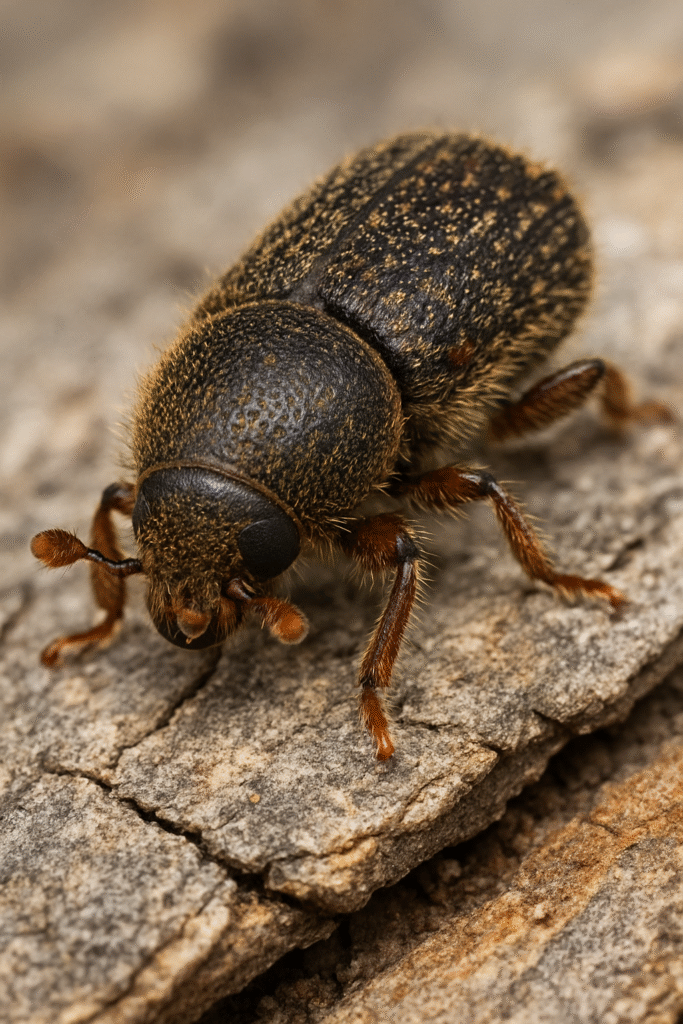
What Types of Beetles Are Infesting Utah’s Trees?
In Northern Utah, the most common culprits are:
- Mountain Pine Beetle (Dendroctonus ponderosae): A major threat to lodgepole, ponderosa, limber, and whitebark pines.
- Ips Beetles (Engraver Beetles): Often attack weakened or stressed pines, boring distinctive patterns under the bark.
- Spruce Beetles: Less common in yards, but a growing forest concern in high elevations.
These beetles bore beneath the bark, disrupting the tree’s ability to transport water and nutrients. When left unchecked, infestations can kill entire stands of pines within just one or two years.
Why Are Pine Beetle Infestations Increasing?
Pine beetle populations have always existed in Utah’s forests, but several environmental changes in recent decades have created the perfect conditions for larger, more destructive outbreaks. These outbreaks are no longer limited to deep mountain forests — they now extend into neighborhoods, foothills, and private properties across Northern Utah.
- Warmer Winters: Historically, Utah’s long, cold winters helped keep beetle populations in check. Extended freezes would kill off large numbers of larvae hiding beneath the bark. Today, winters are not only shorter but also milder. According to the National Oceanic and Atmospheric Administration (NOAA), average winter temperatures in the Intermountain West have risen steadily over the past 30 years. This allows more beetles to survive and reproduce, meaning infestations start earlier in the season and last longer.
- Extended Droughts: Healthy trees defend themselves against pine beetle damage by producing resin — a sticky substance that can literally “pitch out” invading beetles. However, during times of drought, trees do not have enough moisture to generate adequate resin. Utah has faced multiple years of below-average precipitation, and in 2022 the U.S. Drought Monitor ranked much of the state in “severe” or “extreme” drought categories. Weakened by water stress, pines become easy targets for beetles that would otherwise struggle to take hold.
- Dense Forests Near Neighborhoods: In both natural and urban settings, overcrowded trees compete for limited sunlight, water, and soil nutrients. This stress makes them less resilient to insect attacks. In mountain foothills and suburban neighborhoods, where tree planting is often dense for shade or privacy, beetle infestations can spread quickly from one weakened tree to the next. Once a single tree becomes infested, the beetles can easily expand into nearby pines, turning a small problem into a neighborhood-wide issue.
- Stressed Landscapes: Even outside of drought cycles, human activity can stress trees. Construction around the base of pines can damage their root systems. Poor watering practices, such as shallow or inconsistent irrigation, prevent trees from developing strong defenses. In addition, diseases and fungal infections common in Utah’s dry climate can further weaken a tree’s immune system. All of these stressors make urban and suburban pines more attractive hosts for beetles that are constantly searching for weakened trees to invade.
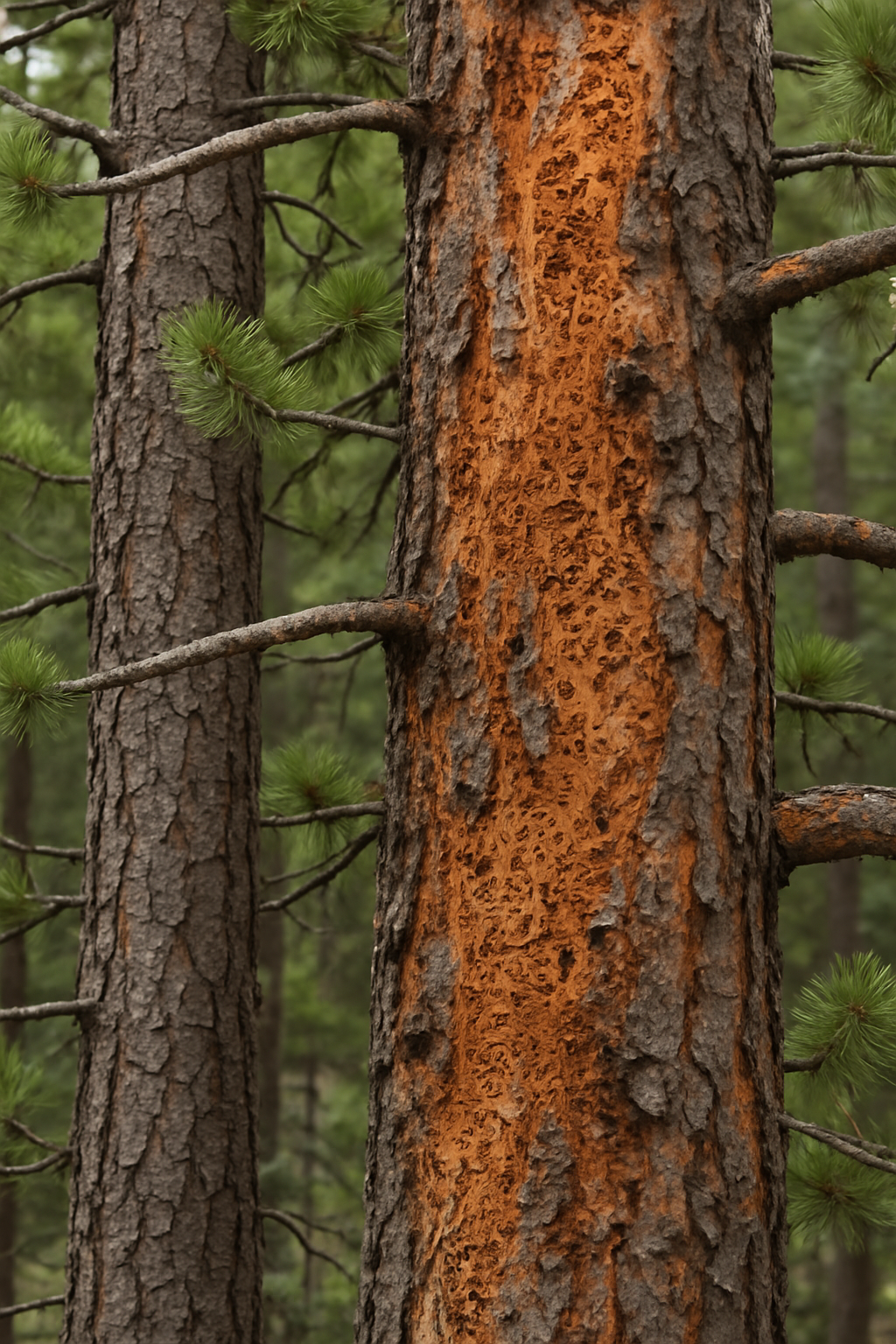
How to Identify Pine Beetle Damage
Catching infestations early is key to preventing widespread loss. Look for these signs in your trees:
- Small round exit holes in the bark.
- Sawdust (frass) at the base of the tree or in bark crevices.
- Pitch tubes (resin blobs) on the trunk where beetles entered.
- Fading needles, starting with reddish or brown discoloration at the top of the tree.
- Woodpecker activity, as they feed on beetle larvae under the bark.
Table: Early vs. Advanced Signs of Pine Beetle Damage
| Stage | Visible Signs | Action Needed |
| Early Infestation | Pitch tubes, frass, small exit holes | Immediate professional inspection |
| Moderate Damage | Reddish needles at the crown, bark flaking | Removal of affected limbs or treatment |
| Advanced Infestation | Entire tree browning, bark peeling away | Full tree removal to prevent spread |
Preventing Pine Beetle Damage in Your Yard
Homeowners in Northern Utah can take proactive steps to protect trees:
- Keep trees healthy with regular watering, especially during drought.
- Thin crowded trees to reduce competition for resources.
- Remove infested wood promptly and properly dispose of it to avoid spreading beetles.
- Use preventive treatments (such as bark sprays) on high-value trees before beetle season.
- Schedule annual inspections with a professional tree service.
Statistics and Regional Resources
- The USDA Forest Service estimates that mountain pine beetles have killed tens of millions of acres of forest across the Western U.S. in the past 20 years.
- According to the Utah Division of Forestry, Fire & State Lands, beetle outbreaks in Utah have been strongly tied to drought cycles and rising temperatures.
- Colorado State Forest Service notes that once needles turn red, the tree is usually beyond saving, highlighting the importance of early detection.
Helpful Resources:
- Utah Division of Forestry, Fire & State Lands
- USDA Forest Service – Bark Beetles
- Colorado State Forest Service – Mountain Pine Beetle
How All Woods Tree Service Can Help
At All Woods, we understand how devastating pine beetle damage can be for Northern Utah homeowners. Our team provides:
- Professional inspections to spot infestations early.
- Preventive treatments for high-risk or valuable trees.
- Safe removal of severely infested or dead trees to protect surrounding pines.
- Custom care plans to keep your landscape healthy year-round.
Protecting your trees protects your property value, safety, and the natural beauty of your home.
If you suspect pine beetle damage, don’t wait until it’s too late. Contact All Woods Tree Service todayfor a professional assessment and solutions tailored to your yard.
Q&A: Homeowners’ Top Concerns
Q: Can a tree survive pine beetle damage?
A: If caught early, some trees can be treated with preventive sprays or trunk injections. Severely infested trees, however, cannot usually be saved.
Q: Are pine beetles dangerous to people?
A: No, pine beetles do not harm humans or pets. The risk lies in tree death, which increases wildfire danger and property damage from falling trees.
Q: Do beetles only attack sick trees?
A: No. While stressed trees are most vulnerable, large outbreaks can overwhelm even healthy pines.
